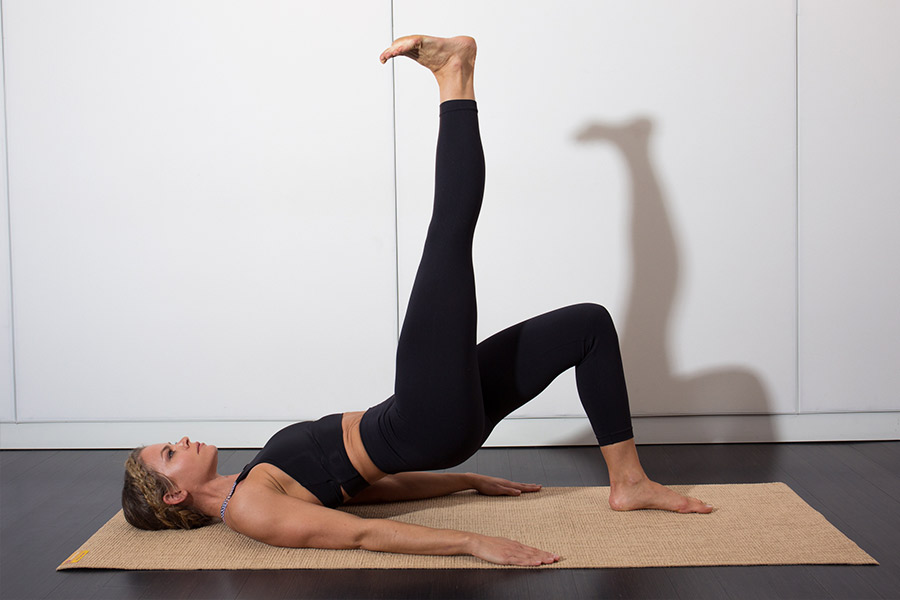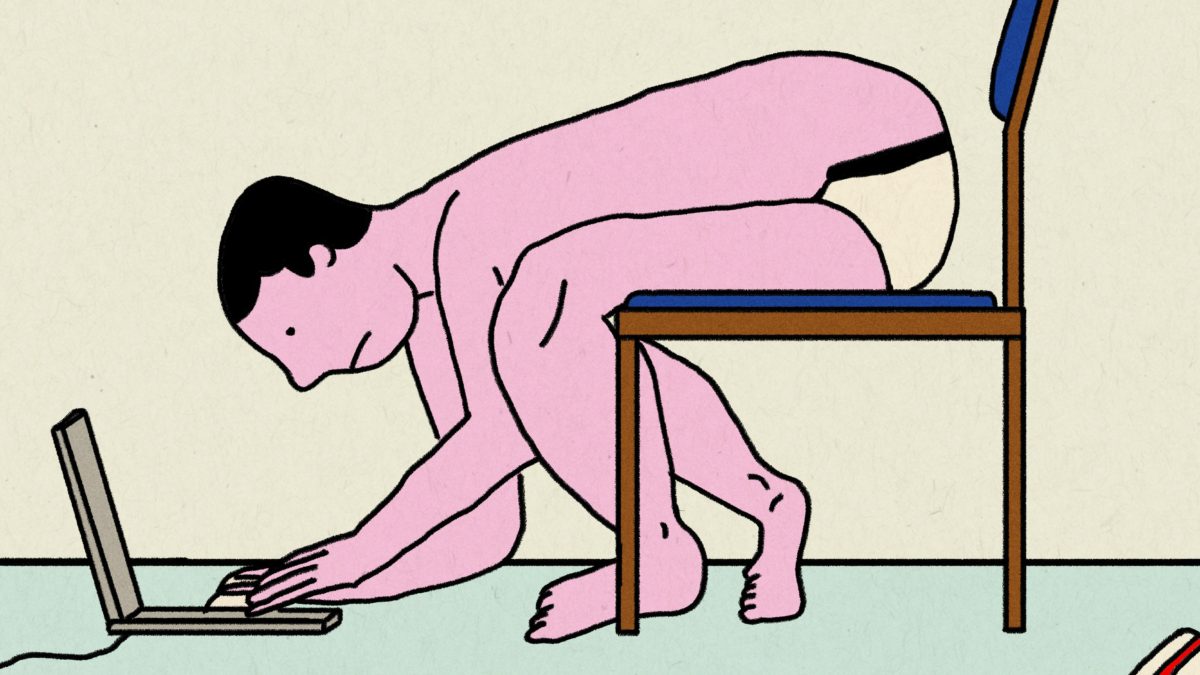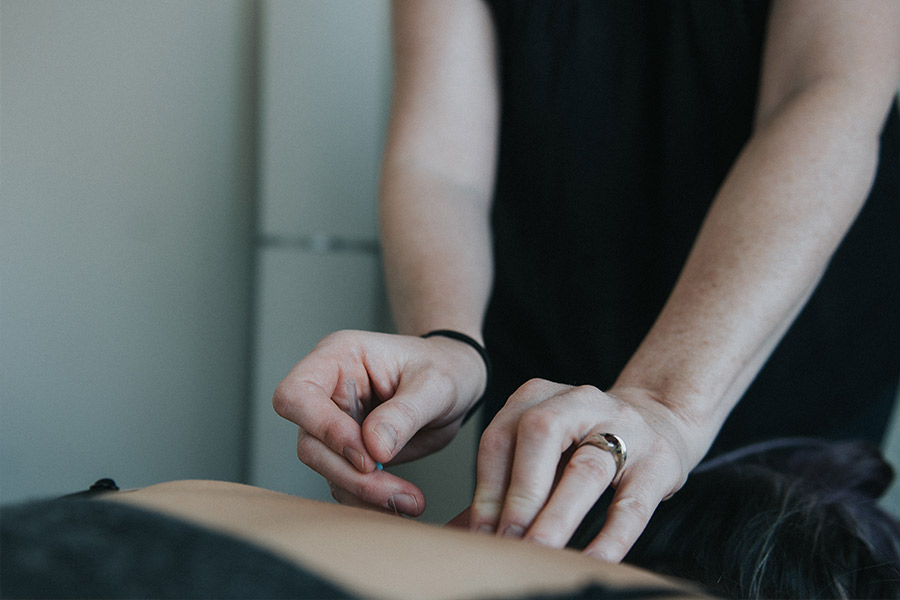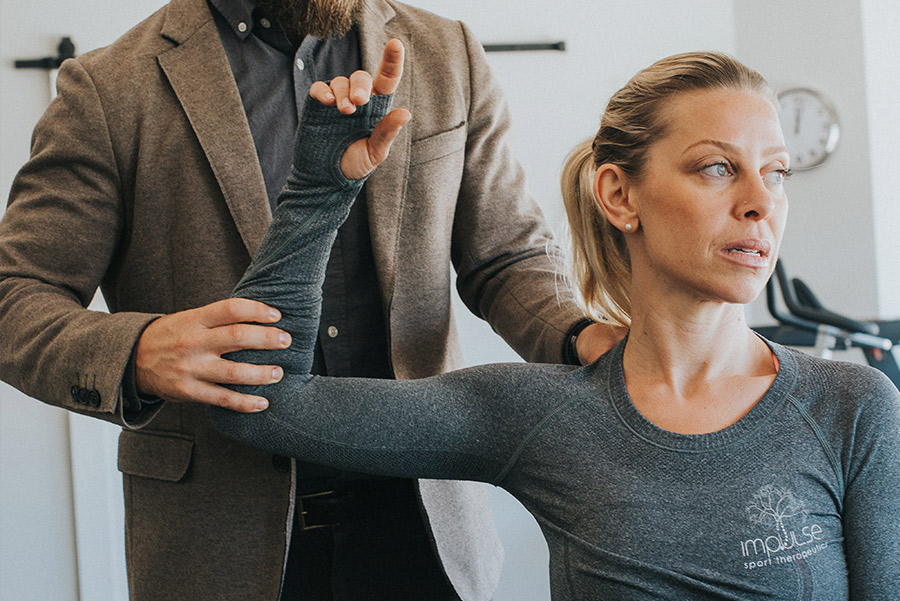Admit it. When you first heard that you’d be working from home a little part of you was excited. The opportunity to wear pajamas all day, post up with your laptop on the couch, attend virtual board meetings in your underoos and kick your feet up for the day seemed like a silver-lining to this whole situation. But, while we were picturing our new commute from the kitchen to our living room, few of us considered the negative impact on our physical health that working from the comfort of our home may have.
The collateral damage from excessive snacking aside(we’ll address the quarantine 15 in another post), the ergonomics of our “office space” at home can be atrocious. From lounging working in bed in the middle of the afternoon with our heads cranked up by a plethora of pillows, to slumping over a bowl of cereal at the kitchen counter while we answer e-mails, there are a myriad of workplace options around the home and we tend to prefer the worst ones.
Spending too much time working in less than ideal positions can cause all types of postural strains and associated aches and pains. Ligament sprains in the lower back, muscle strains in the neck and shoulders, blistering headaches and numb feet are just a taste of what poor ergonomic choices can cause. So, seeing as many of us will be continuing to work from home for the foreseeable future, what can we do to limit postural injuries? It’s simple.
- Mix it up. There is no perfect posture or position we can hold for an entire day and not have some body part being angry by the end of the day. Our bodies aren’t designed to stay in static positions for hours on end and eventually, regardless of how “perfect” your posture is, the structures holding you in that position are going to fatigue and eventually fail. If the failure itself doesn’t cause an injury, the compensation will. When muscles fail, our bodies compensate by recruiting other structures to do the job of those fatigued muscles. When we use structures for a job they’re not designed for, its much easier to cause injuries. The changes don’t have to be drastic to spread the stress out either. One more pillow, one less pillow. Right leg crossed, left leg crossed. Little changes that shift the strain of the position just a bit can be enough to spare you from injury.
- Time is of the essence. How long you spend in a position is more important than the position itself. The key to avoiding injuries is to spread out the load. This means changing position as often as possible so that structures don’t have the chance to fatigue and fail. In an office setting, this can be difficult sometimes. You have one desk and one chair. But at home, the options are endless! Lounge on the couch, flop on the ground, post up at the kitchen counter! Just be sure to change positions before your body starts telling you that you should. 10-15 minutes at a time is usually a good ballpark to aim for before you switch it up.
- Exercise your rights. With no boss around to hold us accountable, there is no excuse for us not to chop up our days with a little exercise. Our bodies are dynamic machines that need to be used in order to function properly. Go for mid-day walks, have a dance party in your kitchen, find a virtual yoga class. The selection of online resources is endless theses days and there is something for everyone. Not only does partaking in a session of Zumba or pilates keep our bodies happy, exercise will also release endorphins and other hormones that keep our minds happy and healthy too!

We may not be subjected to the stresses of a commute anymore but that doesn’t mean the battle against back pain has been won. With the newfound comfort of working from home, come new considerations for healthy living. Luckily, the keys to stay injury free are as simple as 1, 2, 3!
Already feeling the stresses and strains of working from home? Don’t forget we’re offering virtual telehealth services for physiotherapy and chiropractic during our temporary clinic closure!





